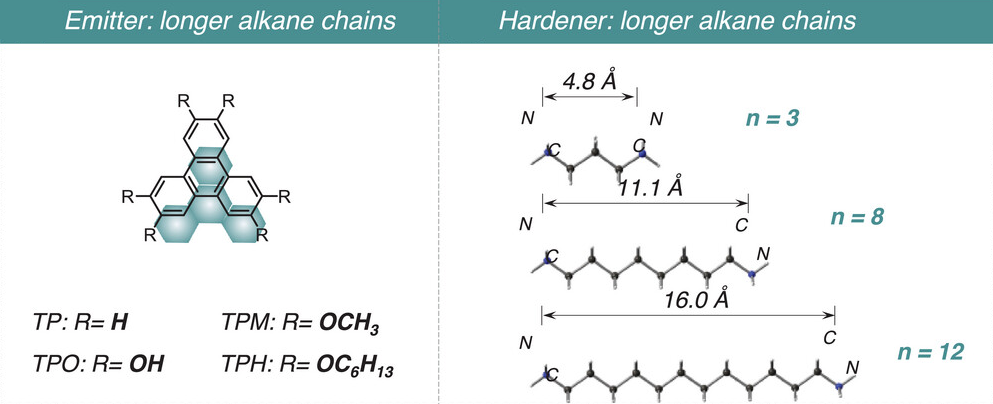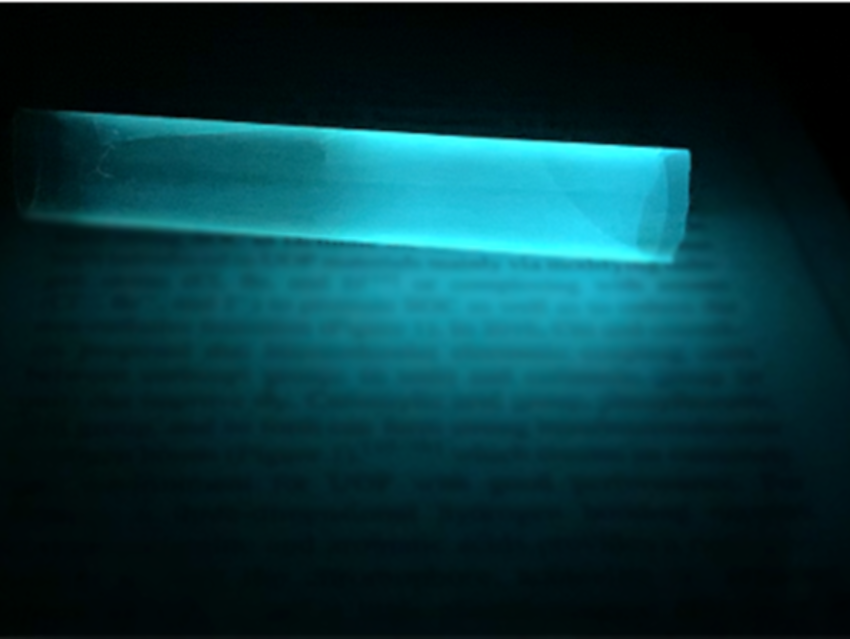Ultralong organic phosphorescence (UOP) materials can be used, e.g., in displays, sensing, information encryption, or bioimaging. Polymeric UOP materials are particularly promising due to good film-forming properties, cost-effectiveness, and suitability for large-area production. However, achieving good water resistance in these materials for long-term stability is challenging.
Zhu Mao, Pengli Zhu, Shenzhen Institute of Advanced Technology, Chinese Academy of Sciences, Zhenguo Chi, Sun Yat-sen University, Guangzhou, China, and colleagues have developed a strategy to enhance the water/moisture resistance of polymeric UOP materials. This strategy relies on modifying the crosslinking density of the covalent networks and using the hydrophobic effect of alkyl chains. The team tailored the alkyl-chain lengths of hardeners and emitters in the polymer materials.
The researchers used a bisphenol-A-based epoxy resin as the polymer skeleton due to its high rigidity, low cost, and good processability. They introduced phosphorescent emitters with varying alkyl chain lengths (pictured below), such as triphenylene (TP), 2,3,6,7,10,11-triphenylenehexol (TPO), 2,3,6,7,10,11-hexamethoxytriphenylene (TPM), and 2,3,6,7,10,11-hexakis(hexyloxy)triphenylene (TPH), and hardeners such as 1,3-diaminopropane, 1,8-octanediamine, and 1,12-diaminododecane to construct covalent networks with different crosslinking densities and polarities.

For the optimized materials, no obvious decrease in UOP emission was observed after a high-temperature/humidity test for 7 d at 85 °C and 85 % relative humidity. The team found that rigid covalent crosslinking networks suppress the quenching of triplet excitons, while the hydrophobic microenvironment affords good water/moisture resistance. Overall, the work outlines a new design strategy for the development of long-term environmentally stable UOP materials.
- Polymeric ultralong organic phosphorescence with excellent humidity and temperature resistance via hydrophobic effect,
Zhongyu Li, Kexin Fu, Huangjun Deng, Kaixuan Nie, Zhe Pan, Zhu Mao, Juan Zhao, Gang Li, Pengli Zhu, Zhenguo Chi, Rong Sun,
Aggregate 2023.
https://doi.org/10.1002/agt2.440

![Synthesis of [c2]Daisy Chains via Mechanochemistry](https://www.chemistryviews.org/wp-content/uploads/2025/04/202504_RotaxanesWithSolidStateMechanochemistry-125x94.png)


